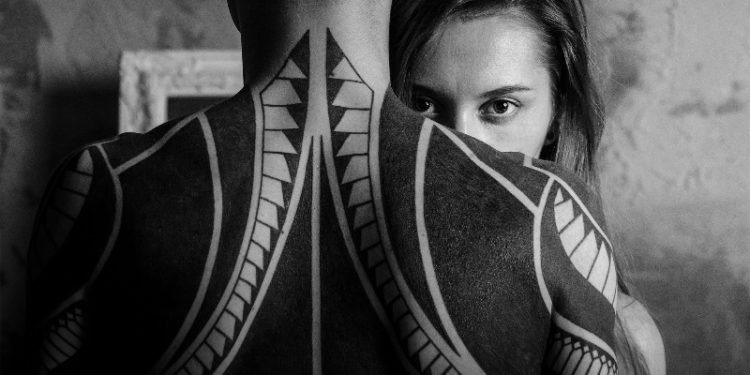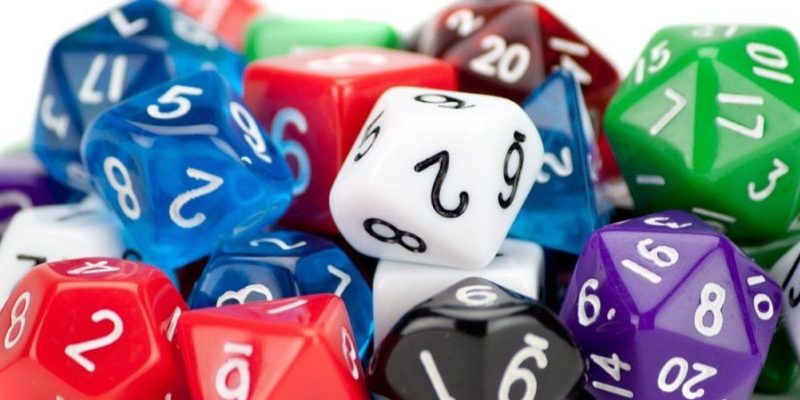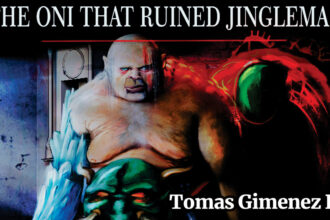Using Tattoos in your game, P2

Magical Tattoos are complicated things both from a mechanical, social, and religious aspect.
Last time we gave a definition of a tattoo, examined how different classes might use tattoos, looked at monster tattoos and tattoo power levels. This time we’ll discuss the following topics:
- How magic tattoos and other items might interact
- Magic tattoo removal
- How religion and different sects of society might react to the tattoos
- Activating & Advancing Magic Tattoos
- Creating New Tattoos
- Cursed Tattoos
Magic Tattoos & Other Magic Items
Magic in D&D 5e is based around the character having only so many body “slots” for magic items. It’s also based around the need to “attune” said items. Tattoos, et al. are a magic item for all intense and practical purposes. DMs could rule one of 10 ways:
- The body slot that the tattoo takes can’t hold another magic item. If the character tries, they gets a backlash of untyped magical energies, that may not be diminished by any means, in addition to energies that assault the user’s mind. These magical energies force those foolish enough to do so to save vs. DC 20 or take 1d6+1 per rarity level of the tattoo, plus an additional 1d6 psychic damage:
1d6+1 common +1d6 psychic
2d6+2 uncommon + 1d6 psychic
3d6+3 rare + 1d6 psychic
4d6+4 very rare + 1d6 psychic
5d6+5 legendary + 1d6 psychic - The other magic item is useless can’t be attuned. Nothing else happens. If there are effects that are usable when not attuned, they work as usual.
- The magic item is useless and can’t be attuned, but neither can it be removed without casting “remove curse” on the character. Furthermore, the tattoo doesn’t work for the duration either.
- The body slot that the tattoo takes won’t allow for either magic or mundane items to be used. For instance, if a character has a tattoo across their chest, they can’t benefit from normal or magical armor. They may not be able to even use clothing to cover it up. This interpretation is the most stringent.
- The body slot that the tattoo takes will allow mundane items, but not magical. The mundane item allowed interpretation allows the character to wear nonmagical armor while still having the use of the tattoo
- The body slot that the tattoo takes can hold and attune another magic item, but the character must decide which is active at the beginning of the day which s/he wants active. Changing their decision will cost a short rest. An example of this scenario might be a character that has a tattoo on their chest and wants to wear a leather +1 breastplate.
- The body slot that the tattoo takes can hold another magic item, but the character must decide which is active at the beginning of the day which s/he wants active. Changing their decision will cost an action, in which the character can do nothing but switch powers.
- The tattoo’s power is “erased” by the presence of the other magic item while it is attuned. However the character is free to take it off and allow another character to attune it, thus freeing up the tattoo.
- The tattoo’s power is diminished by the presence of the other magic item, but is still usable.
- The tattoo’s power and the magic item are complimentary. While both are attuned and active, more powers emerge by their synergy.
Note: how magic items and magical tattoos react to one anther could be dealt with on a case-by-case basis. One combination might work well together, where another is problematic.
Removal of Magic Tattoos
Tattoos in real life aren’t removed easily. A person who wishes to have a tattoo removed, needs to have a laser evaporate the inks from their skin. Therefore, tattoos in game should be equally problematic to remove. The following methods are some possibilities when it comes to removing the tattoo:
- Temporary Tattoos can be easily removed, as they are only on the skin’s surface with judicious of soap and water. If exposed to alcohol, the pattern is ruined and whatever magic was there fades to nothing. Such tattoos are only designed to last 1d4+1 days. Furthermore they may only have limited uses for that timeframe. Before getting a temporary tattoo, the character needs to think ‘what if it stops working at an inconvenient time?’
- Expensive tinctures, creams, and/ or oils worth at least 150 gold per area of the body the tattoo covers and must be applied daily for a week to remove it. The process to obtain the ingredients for the removal method could be an adventure in and of itself.
- Staying in a “null magic zone” for 1d6+2 days. At the end of the time, the ink becomes permanently nonmagical, but the design remains. Conversely, the ink could simply fade into nonexistence. The reason
- Remove curse / Remove disease.
- Limited Wish / Wish
- “Break” the tattoo. In Margaret Weiss and Tracy Hickman’s Deathgate cycle, the tattoos (in the form of magic runes) in are able to be broken with magic. There are magic implements that will aid in the tattoo’s breaking. Regardless of whether the tattoos are broken with the implements or raw magic, it’s not only a stressful process, but a dangerous one as well. Characters subjected to this will need to beat a DC 20 for Con to not have complications. Should said complications arise, the character temporarily loses 1d6+ 1/4 their level constitution, which returns at the rate of 1 point a week, and suffers 2d6 psychic damage. Breaking runes to remove them is only done as a last resort or to prisoners to break their wills.
Tattoos & Religion
Religions can have a love-hate relationship with both normal and magic tattoos.
Some religious organizations (such as the tattooed monk) require tattooing as a part of initiation. The initial tattoo might not do anything. It might simply be a test to see if the monk in question can withstand the pain of being tattooed. The tattoos will eventually allow the monk to access greater powers, but these must be learned.
In other religions, the tattoos could be a sacred link between the followers and their god. Even if not magical in the direct sense of the term, tattoos that mention a deity’s name allow the deity in question to be able to see around the follower. The more people with tattoos, the greater sight the deity has. Even if the character having the tattoo is unable to speak, simply touching the tattoo with the deity’s name may bring their attention of the deity to their follower. It may even allow the deity to work a miracle in the absence of one if its clerics.
Others religions not care either way.
Still others may throw you out for having tattoos or force you to get them removed, as the deity in question (or the people running it) finds the very idea of permanently marking yourself with ink disturbing or insulting.
Some branches of the same religion may even have a different opinion of them than others. When deciding how a religion will react to tattoos, consider an in-universe explanation as to their reasoning.
Tattoos & Society
In modern times, heavily tattooed people are given strange looks, outright rejection, or even fear by some groups and acceptance by others. Given that PCs are adventurers, and oftentimes from foreign lands, they may get a “free pass” if the tattoos are small or inconspicuous. Such tattoos are able to be covered by clothing or armor. On the other hand, if their entire body is tattooed, the tattoos they have are large or not easily hidden, or made of controversial symbols (think evil magic or unfavored gods), characters may have problems. The tattoos can even cause the characters to get arrested or put under protective custody.
Activating Tattoo Powers
Tattoos don’t need any special activation. Even a character without any magical aptitude can activate them. It can be keyed to a simple act of will, a command word or phrase, or even a touch with the intent to use it. Once activated, the magic imbedded in the tattoo comes to life.
If the tattoo is based on a spell, the spell is activated per the spell’s description. When the tattoo is chosen, the spell’s level is chosen as well. In this way, tattoos are similar to a scroll, but one that can’t be removed from the caster’s body. Note: if the spell the tattoo casts needs concentration, the tattoo’s user still needs to concentrate on it.
If the tattoo is the use of a skill the tattoo’s wearer adds their stat modifier and proficiency modifier and uses it as if s/he had it naturally. Tattoos might also have a passive “always on” bonus to a skill. On the character sheet, note the tattoo as the reason for the skill or its increase, so when it’s removed or unable to be activated again for awhile.
Similarly, if the tattoo is based on a feat the user can perform it, provided they meet all the prerequisites. If the tattoo’s user no longer qualifies, they lose access to the feat the tattoo granted.
On tattoos that can be activated multiple times daily, there is a cooldown period. The tattoo typically recharges on a 6.
Advancing Tattoos
Because a tattoo is a permanent feature of a character, it may be useful to add features, skills, advance the damage die, range, etc. as opposed to removing the tattoo and putting a new one in its place. Unfortunately, the process is neither cheap nor easy. To add something new to a current tattoo, the artist must have ink and other misc. materials on hand. The cost for both the ink and the service itself is usually quoted at per rarity level of the tattoo. This price excludes the cost of the service itself, which in itself may tens of thousands of gold pieces per rarity level. Then they must make an Arcana roll equal to 10 + the rarity of the tattoo (e.g. +1 common, +2 uncommon, +3 rare, +4 very rare, +5 legendary) + the 1/2 the character level, rounded down. For instance, the artist who is trying to advance a 15th level character’s common tattoo would need to beat a DC 19 (Arcana) roll. Small adjustments such as increasing the level or a spell may take several hours, whereas more extensive modifications may take several days of careful inking.
Creating New Tattoos
You can come up with new tattoos for your game. When you’re doing so, consider the following questions:
- What is the power level of the tattoo?
- What is the rarity of the tattoo?
- How many times a day can it be activated? Or is it an “always on” tattoo?
- Are there any requirements based on race, class, or level?
- What specifically does it do?
- How much does it cost?
- What drawbacks are there, if any?
Cursed Tattoos
Cursed tattoos are when something goes wrong with the tattoo. If you’re familiar with the Naruto series, Sasuke’s “cursed mark” could be considered such a tattoo. It was forced on him unwillingly by Orochimaru biting him. Some possible curses could be as follows:
- The tattoo causes the user to eat more than necessary or eat things the user would find disgusting if not under the tattoo’s magic.
- It could causes the user’s alignment to shift over time. Or the tattoo itself could cause the user to “detect” as evil even when they’re not.
- The tattoo can take control of the user and force him or her to do its bidding
- Tattoo warps, mutates, or otherwise changes the user’s body. These changed might become permanent if left unchecked.
- It could cause them to lose class abilities, HP, or stat points.
Conclusion
As you can see, there are many ways to use tattoos in your game. Take a few of these ideas and change them to suit your gaming world. If any of these ideas struck a chord, and you want to use them, feel free to tell me in the comments section below!



